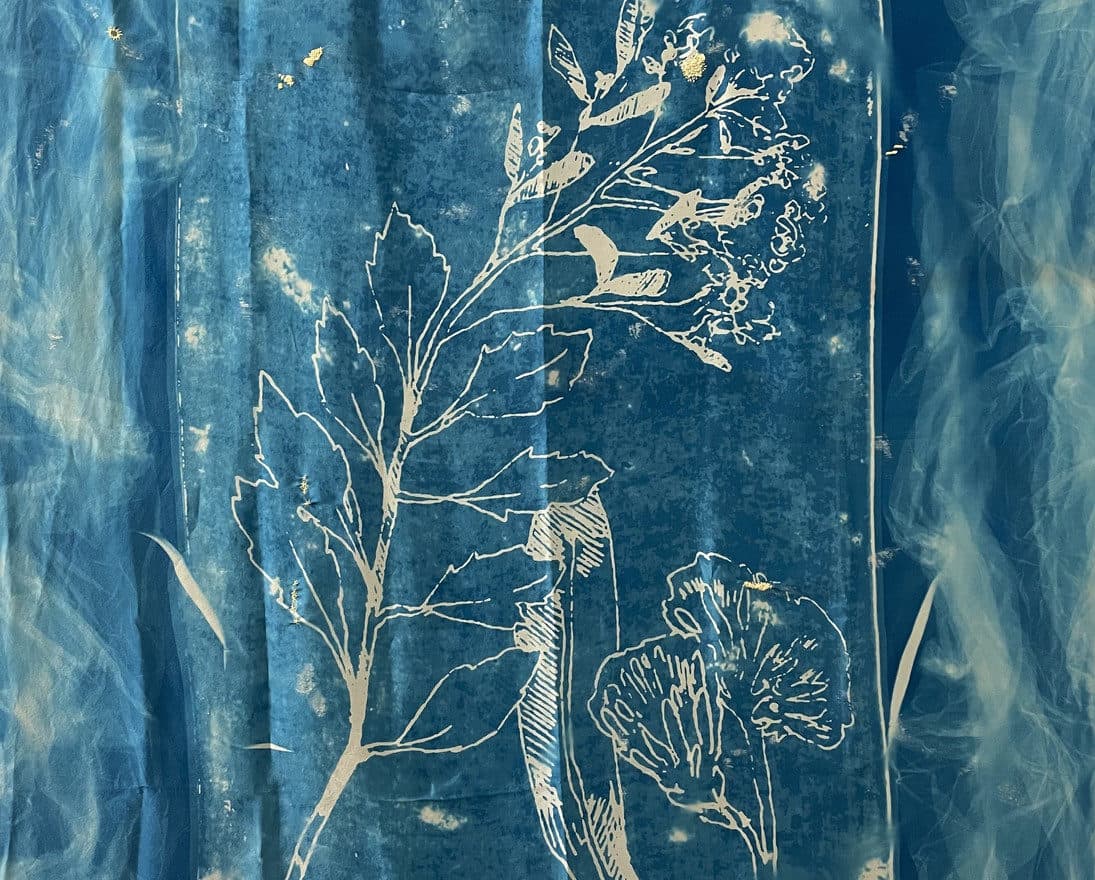
Heather McMordie
Stitch & Stay Awhile: Baccharis Halimifolia, 2021, Cyanotype on damaged silk
with cotton thread, Courtesy of the Artist.
Visit Heather McMordie’s website
Instagram: @hlmcmo
Hear from the Artist
Transcript
My name is Heather McMordie, and the work I’m exhibiting in the Newport Biennial is titled Stitch & Stay Awhile. The two textiles shown here are part of a series of five that reflect on the beauty of salt marshes, the need for our care and repair of these ecosystems, and the labor that goes into environmental care.
This project developed after spending time with scientists learning about methods of marsh restoration, and participating in volunteer planting days with Save the Bay. Especially in coastal areas here in Rhode Island (and elsewhere in the world), salt marshes are incredibly valuable ecosystems, but they are threatened by a combination of rising sea levels and encroaching development. Restoration of these ecosystems can be a year’s long process, and I wanted to create a project that communicated both the beauty of salt marshes, and the labor that goes into protecting them in the hopes of generating more personal, public investment in these spaces. Ultimately, Stitch & Stay Awhile as an experiment to see if art can spark interest in environmental care.
For the textiles themselves, I used cyanotype processes to print larger than life representations of marsh vegetation on silk. Abrasives were then used to damage the silk, and I put a call out for volunteers to spend an hour mending these massive textiles. Because of the pandemic, I initiated this as an at-home project. Each participant was mailed a kit with a textile, thread, needle, embroidery hoop, and simple mending instructions as well as a link to a playlist of marsh sounds. It was really important to me that participants feel connected to the marsh while mending, and sound seemed like the best way to create a remote connection to an environment. I ended up collecting over 30 hours of field recordings, and paired it down to just five hour-long tracks for participants to choose from. In the comfort of their home, participants could mend for an hour while meditating on the sounds of a salt marsh. After mending, the textile gets packed up and sent to the next person.
You’d be surprised how little you can mend in an hour. To date, over 30 participants from across the country have volunteered their time for this project, and there’s still so much more to be mended. It seems appropriate though, that the project would be so laborious and require so many hands. Conservation isn’t an individual action; it takes commitment from the entire community, and is never really finished. My hope is that this piece communicates the need for each of us to move mindfully and take part in environmental care wherever we find ourselves.